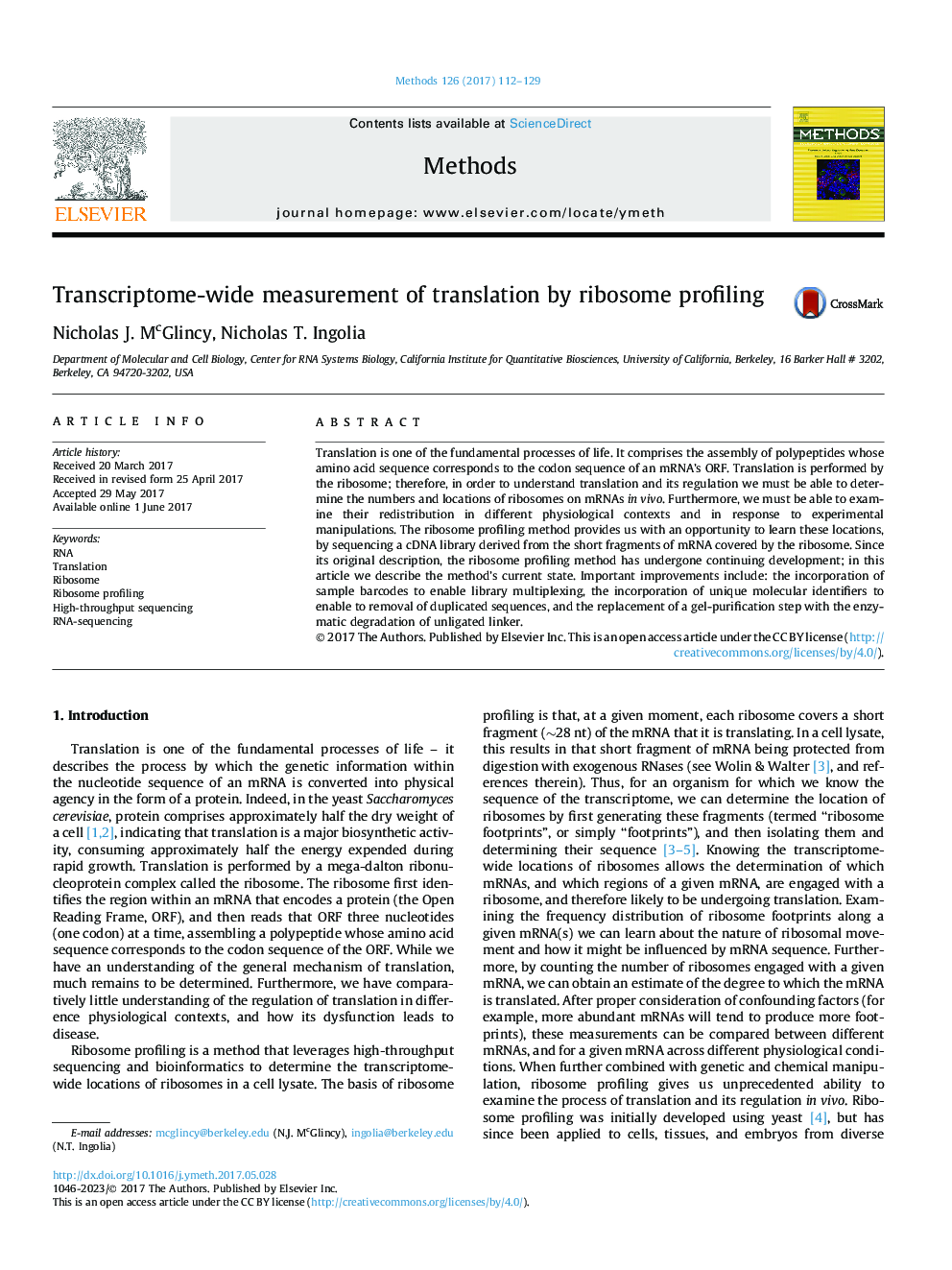| Article ID | Journal | Published Year | Pages | File Type |
|---|---|---|---|---|
| 5513397 | Methods | 2017 | 18 Pages |
â¢The latest version of the ribosome profiling protocol is presented.â¢Custom linkers contain sample barcodes and unique molecular identifiers.â¢Enzymatic depletion of unligated linker replaces a gel extraction.
Translation is one of the fundamental processes of life. It comprises the assembly of polypeptides whose amino acid sequence corresponds to the codon sequence of an mRNA's ORF. Translation is performed by the ribosome; therefore, in order to understand translation and its regulation we must be able to determine the numbers and locations of ribosomes on mRNAs in vivo. Furthermore, we must be able to examine their redistribution in different physiological contexts and in response to experimental manipulations. The ribosome profiling method provides us with an opportunity to learn these locations, by sequencing a cDNA library derived from the short fragments of mRNA covered by the ribosome. Since its original description, the ribosome profiling method has undergone continuing development; in this article we describe the method's current state. Important improvements include: the incorporation of sample barcodes to enable library multiplexing, the incorporation of unique molecular identifiers to enable to removal of duplicated sequences, and the replacement of a gel-purification step with the enzymatic degradation of unligated linker.
